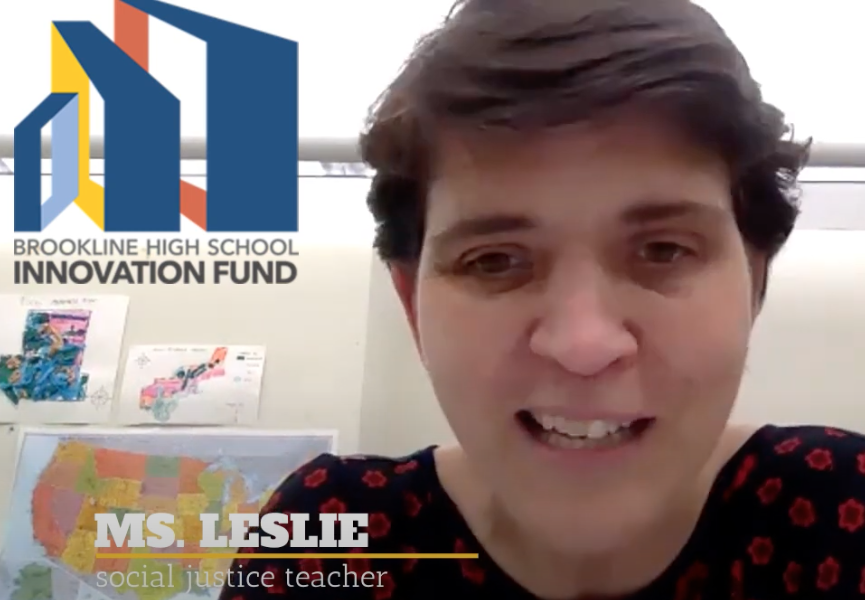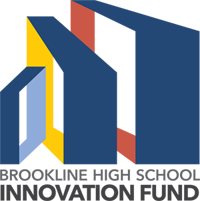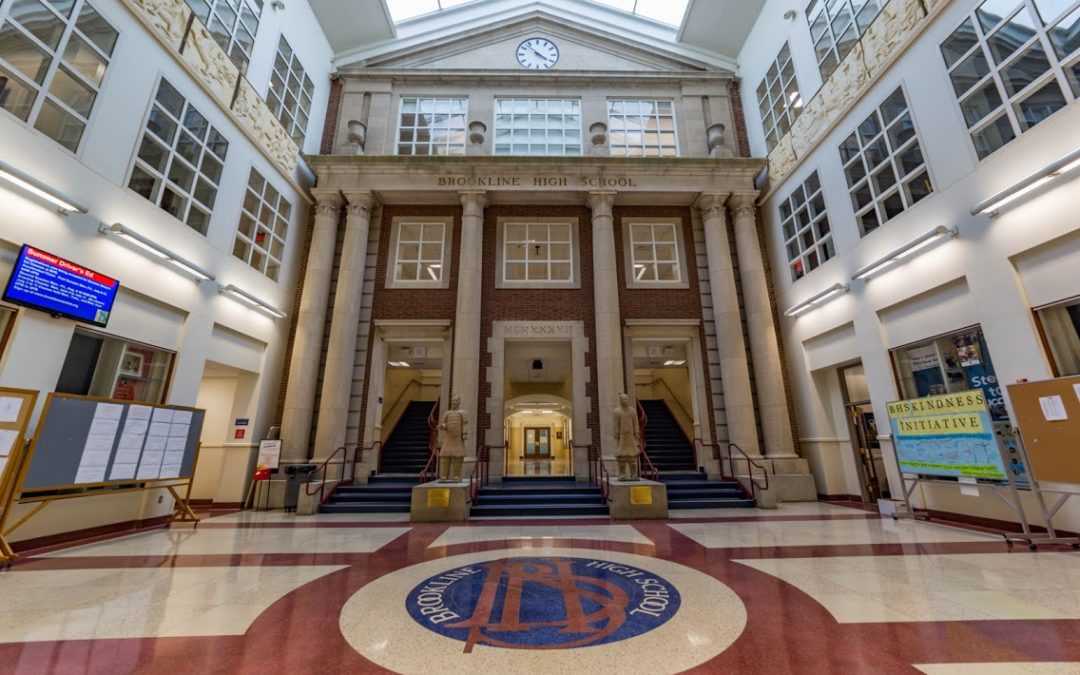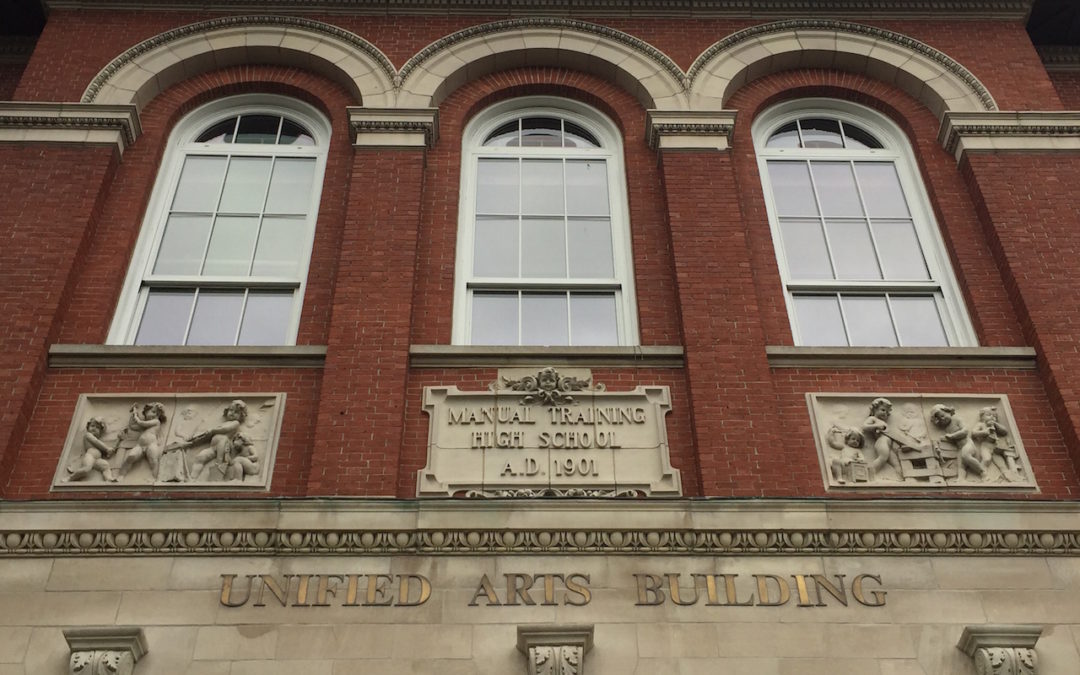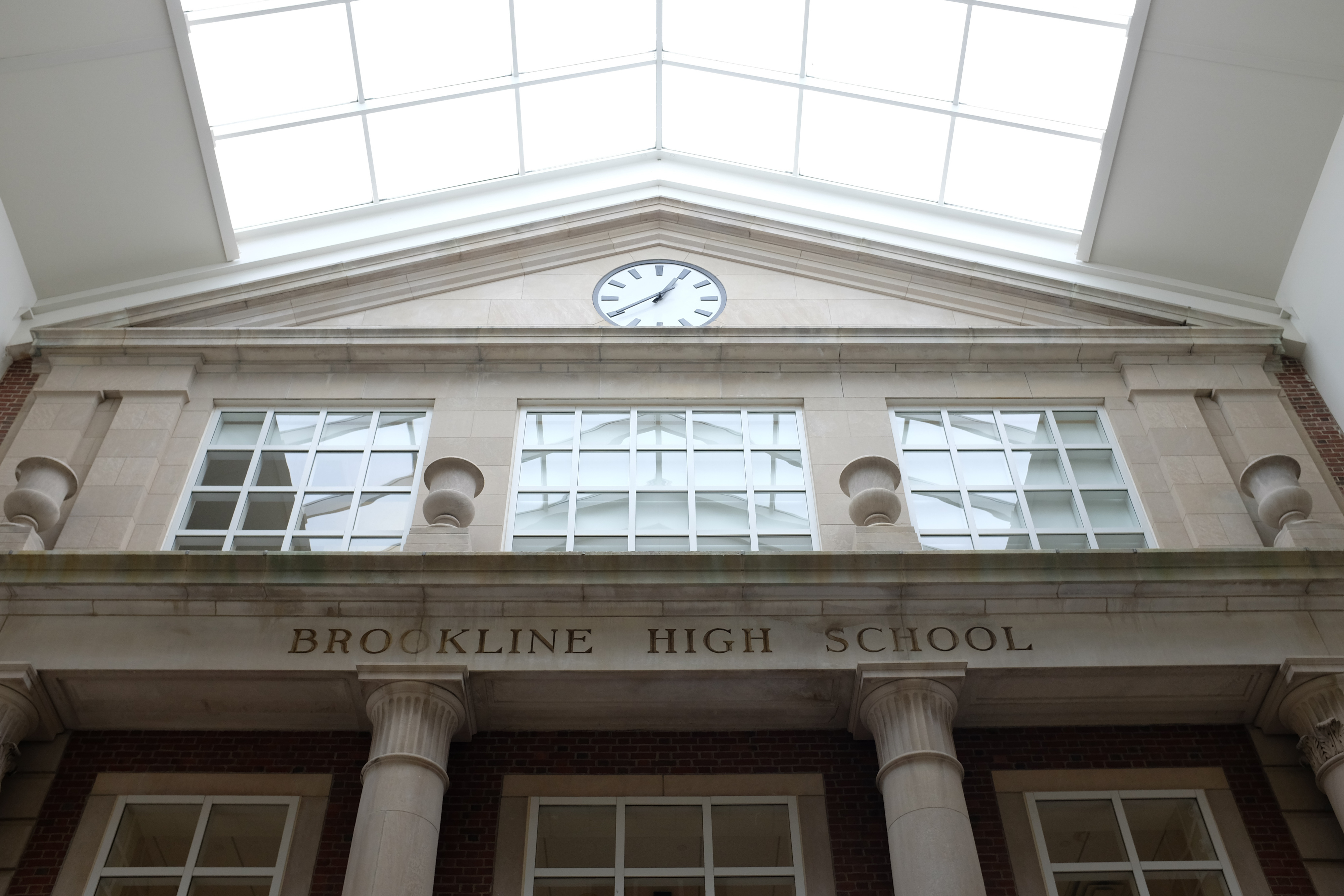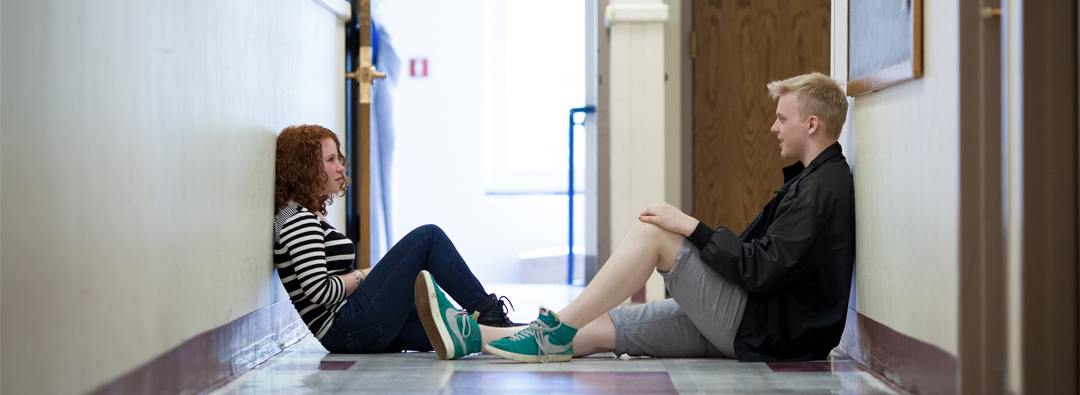
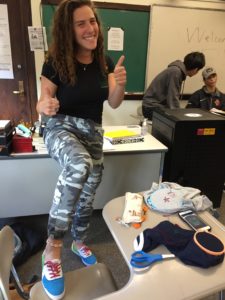 Brookline High School alumna Maya Rozen interviewed current students about their experiences participating in BHS Innovation Fund courses. Hear the impact of the Innovation Fund at BHS in the students’ own voices.
Brookline High School alumna Maya Rozen interviewed current students about their experiences participating in BHS Innovation Fund courses. Hear the impact of the Innovation Fund at BHS in the students’ own voices.
Many of the courses offered at BHS revolve around a curriculum that students are required to take, which is why many students relish the academic opportunities that grant them more freedom to explore other areas of study more on their own terms. For students interested in engineering, Engineering by Design is a great class that allows students to explore different areas of engineering and design and to pursue projects that they are passionate about. Other classes like Social Justice and Racial Awareness provide a safe space for students to learn about important topics with the freedom to share their own thoughts, experiences, and beliefs. Many of these classes allow students to explore new subjects that aren’t always covered in the required curriculum.
In your opinion, what makes your Fund class different compared to your other classes?
“Something that stood out to me about the class was the amount of freedom we had because I kind of expected it to be really structured with a lot of rules, but I found that with all of the projects there was a lot of room for our own ideas and a lot of room for creativity, which I liked.”
~Sarah S., BHS ’21, Engineering by Design
“I think since you have to apply, everyone who is in the class is really interested in social justice and wants to be there. It’s not like people are taking it just to check it off the list or just to say they took it. I can see people who were in my class that are now doing things on their own time, whether they have an internship, or they’re volunteering, or they’re just doing research and finding ways to work on the issues that we learned about. I also think that since everyone wanted to be there, people really opened up because we’re all so passionate about it. Everyone’s open to hearing the perspective of other people who are passionate and I think a lot of that comes from Ms. Leslie because she has so much passion. You can see when she’s teaching that she wants to be there so much and she wants to give us all this knowledge of what is actually happening, and then give us the freedom to talk about what we think, and that is something that I often don’t find in a class.”
~Aine D., BHS ’21, Social Justice
As a ninth grader entering BHS, the thought of graduation seems as if it is a million years away. Freshman and sophomore years pass by in the blink of an eye, and then suddenly you’re in your junior year and it’s time to begin figuring out what your next steps will be after you graduate high school. Some students go through high school with a clear idea of what those next steps are whether it’s pursuing a certain career or studying a specific major in college, but for many students this is not the case. Having the opportunity to try out different classes can expose them to new subjects and inspire new interests. Many students find that classes like Social Justice can lead to new interests that they are excited to continue pursuing after high school. Aside from exposing students to new topics, these classes also teach students very valuable skills that they don’t always learn from their required courses. Tutorial helps many students learn how to better manage their time and their work, teaching them valuable skills such as organization, time management, and how to plan out their week. Other classes like Racial Awareness can help students feel more comfortable going out of their comfort zone through being exposed to new points of view or learning how to have tough conversations. All of these skills are very important to have during their time at BHS and beyond.
How has the class shaped who you are as a student? How have you grown as a result of this class?
“As a student, I noticed as I was taking this class that before I tended to make more assumptions about people, and this class has helped me think about the reasons I’m doing that and how not to act on those assumptions, and I think I definitely have grown from taking this class.”
~Kate C., BHS ‘22, Racial Awareness
“I think I’ve grown a lot in the way that I feel like I can voice my opinions more if someone brings up an issue. I feel like I have the knowledge and the power to actually voice my opinion because I’ve learned about it. I think that a lot of times now I’ll hear conversations going on and I’ll actually know what they’re talking about which I think is really cool because I can participate in the conversation. Now more than ever I feel like I can help. I have so much of an understanding of what’s going on, so I can really help and try to help other people try to understand what’s going on.”
~Zoey F., BHS ‘22, Global Leadership
“I think I’ve grown in my abilities to ask for help and to make sure that I have a plan for the week for my assignments and projects and when I should be doing them. I think my experience would be a lot harder, I would be less organized, and I don’t think I would get as much work done without tutorial.”
~Declan T., BHS ‘22, Tutorial
“I think that I’ve been able to want to have the uncomfortable conversations. A lot of times people don’t want to talk about a certain thing because they know people have conflicting points of view or that it affects someone personally and they don’t feel like it’s their place to talk about it. This class made me realize that you can have a voice, but it’s also really important to listen, and listen to the uncomfortable conversations and be able to ask questions and be able to talk about it even though it might be uncomfortable.”
~Aine D., BHS ‘21, Social Justice
Many classes like Global Leadership and Social Justice offer students the unique opportunity to learn about current, important topics while simultaneously engaging in real world problem solving and solutions. Fundraisers, volunteering, and peaceful protests are some of the many ways where students can feel like they are not just doing the important learning, but also feel like they are making a real difference and contributing to the solution.
Can you describe some of the most memorable parts of the class and talk about a couple of your favorite assignments?
“We were having a lot of meetings and conversations about the Black Lives Matter movement. We got to talk about them as a class and getting to hear from other people about what they’ve been doing and how they’ve been using the things that we learned from this class to contribute to this movement was great.”
~Kate C., BHS ‘22, Racial Awareness
“I think a lot of people will say this but definitely learning about the incarceration system. The prison trip is always something people talk about for a really long time. I was excited about the trip because I think the incarceration system isn’t something that we see on the news every day. When I sit down to watch the news, I don’t see them talk about all the oppression and discrimination that exists in the incarceration system. I think that it’s overlooked a lot so I really wasn’t aware of what was happening in the system, and being able to go to a prison and then talk to inmates was really cool because we could hear their first hand experiences and they were really honest. They talked about the guards there and how they’re not nice to them and what it’s like in solitary confinement. They were just really really honest about what’s happening, and being able to see that after watching movies about the incarceration system and what happens was really powerful, so that was the night that really stood out to me.”
~Aine D., BHS ’21, Social Justice
“One of the assignments we did was called the TAP Challenge which was where we raised money for clean water in Nicaragua, and we did that by starting a school campaign to have everyone bring their own water bottles and not use plastic water bottles for 25 days. We sold reusable water bottles and tumblers and also stickers. I thought it was really cool because it really felt like we were making an impact instead of just learning about the issue. I actually felt like I was doing something about it while still learning about it in class.”
~Zoey F., BHS ’22, Global Leadership
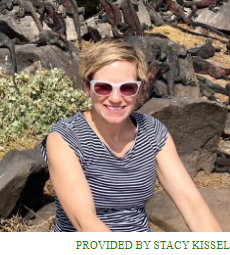
The Brookline High School Innovation Fund offers many unique opportunities to both faculty and students that can enhance their experience at BHS. Students have the ability to take an array of unique classes covering topics ranging from global current events to engineering and design. Faculty are also able to participate in many different programs that can add even more value to the work they are already doing at the high school. Through participation in these programs, teachers are able to support and create lasting connections with individual students, find inspiration and value as an educator, and have the ability to create or refine curriculum. Stacy Kissel is a teacher who has been able to experience all of those things through her time working with the Innovation Fund.
Establishing Tutorial as an Academic Resource
Kissel started working as a physics teacher at BHS in 1998. She became involved with the Innovation Fund very early on in its existence after former headmaster Bob Weintraub helped establish it at BHS. Throughout her time at the high school, Kissel has been involved in a number of different programs supported by the fund. She was one of the first teachers to participate in Tutorial, and most recently she has been working with other physics teachers to develop a curriculum for a new physics course. “I heard former Head of School Bob Weintraub talking about it during the early days when he was still raising money for this idea to encourage creativity in the school, and to give teachers opportunities to pilot new classes, and he was just so enthusiastic about it,” she explains. After hearing about a new program called Tutorial, Kissel knew that this was something she wanted to get involved in. As a part of the first group of Tutorial teachers, Kissel was able to collaborate with other teachers and decide what Tutorial should be and how it should work. “There were eight of us meeting to come up with what Tutorial is. We met frequently and talked about what the ideal model is and what we can do with the resources we have, and that was a very collaborative experience, since that was a completely new program.” Eighteen years later, Tutorial is a class where students can receive individualized support to help with their studies. Students work with their Tutorial teachers to identify areas where they can improve their academic performance, and spend their class time receiving support from their teachers and doing independent work. Tutorial continues to be a program that many students benefit from.
Throughout her involvement in Tutorial, Kissel gained a lot more insight into the daily schedules of her students outside of the physics classroom. She explains, “I think early on with Tutorial, it sort of changed me in that I got to see the big picture of a student’s day.” When previously she only knew what students were doing within the walls of her classroom, teaching Tutorial allowed her to see what students were learning in other courses. “It was especially great for me to see what the kids were doing in math, and how that meshed with what we were doing in physics.” Being more aware of the other work students were doing was also a way that Kissel made sure she wasn’t assigning a large physics project on top of other large assignments they were working on for other classes, as not to overwhelm them.
Another benefit Kissel gained from teaching Tutorial were the connections she was able to make with her students. She really valued having meaningful relationships with students and really appreciated it when there were opportunities for her to create those meaningful relationships. Tutorial was one place where Kissel could begin to do so. When Tutorial started only 40 kids in the entire school were enrolled, so for the first few years she taught Tutorial with the same teacher every year and had the same kids in her class. “There was a kid, for example, that I had freshman year in my physics class, and then I had in Tutorial sophomore, junior, and senior years. I had that kid for four years of high school and I knew him so well by the end, and that was at the beginning of the program, but what I loved about Tutorial was that they’re with the same teacher and you’re with the same kid.” In this case, Kissel was able to create and maintain a relationship with that student throughout the four years they were at BHS. Although the program has changed and grown a lot over the years, and teachers no longer have the same students every year, she says that you still get to know the students very well. “Even just one year with kids, you get to know them so well having them in a small group four times a week.”
Building Connections with Students
There have been a number of ways Kissel has been able to create bonds with students throughout her career, whether it was simply in her physics classroom, or during her time teaching at the Old Lincoln School, or accompanying BHS students on the Chinese Exchange program. One experience that really stood out from our conversation was from the Family Partnership program. The Family Partnership program, founded in 2007, was a program in partnership with the BHS guidance department that was working towards narrowing the achievement gap between students. Part of the purpose of the program, as explained by Kissel, was to “Team up with ninth graders who were identified as being kids who might just slip through the cracks. They weren’t the most struggling students or necessarily on their teacher’s radar, but kids who would probably struggle a bit, but not enough to ever warrant the attention of their guidance counselor or dean.” Teachers would get paired up with one or two students, and they would meet up once a week so that the students could have a trusted adult in the school that they could turn to if they ever needed help and didn’t know where to get it from. Kissel was paired up with two students that she met with that year, but it was with one student that she was really able to create a lasting relationship. Every week the two of them would go to Virginia’s Cafe near the high school and talk over a piece of cake or tea. “We just really connected. We liked some of the same things; we both really liked cats and we are both interested in Japanese culture, and we just bonded over random things like that.” Even though the program wasn’t integrated after the first three years, Kissel continued to meet with the student constantly throughout their four years of high school. Their relationship continued even after the student graduated from BHS, meeting up a few times each year, and most recently meeting up for a socially distanced picnic outside. “She’s now 28! And because we are both vaccinated now, she recently came over for dinner. We’re not in touch everyday, but she is a person who I will text about things or email or we’ll meet up and go to a movie or go out to dinner. It’s been great because as a teacher, there is generally this borderline and some things you aren’t really supposed to do with your students, like go out to a cafe after school, but in this program that’s what you did and it was nice that it broke down that boundary between teacher and student.”
Reimagining 9th Grade Physics
Aside from allowing Kissel to build upon her relationships with her students, the Innovation Fund has also given her another really valuable gift. During the 2019-2020 school year, Kissel worked with other teachers to create the new curriculum for 9th grade physics. While Kissel has worked collaboratively with other teachers in the past, it’s nothing like how they have been able to work together now because of this grant. “I have definitely worked collaboratively with teachers over the years somewhat, but it’s usually after school, you’re tired and then you walk into someone’s room and they might have some interesting lab setup that you talk about and then you might collaborate on something, or talk during lunch or during the little collaboration time we have built into our schedule. But having time set aside each week for deliberate collaboration with other physics teachers is something that I really have not had in this quantity.” The physics teachers are completing year two of a three year grant to develop a new course, but it’s already given them something that they don’t often get, which is time. “I think really one of the most important things that the fund does is give teachers course release time so that they can collaborate with other teachers during the school day as opposed to collaborating after school when you have a pile of papers waiting for you and other commitments. As a teacher there’s just never enough time to plan everything you want to do, and that really is the best gift, the gift of time; it’s the biggest gift that the fund can give.”
Apart from the collaborative time Kissel had to spend working with other teachers, developing the new course has also had an impact on the teaching she is doing in her own physics classroom. “It has changed my teaching to encourage more collaboration among students, more hands-on activities especially for projects, and also a deeper development of scientific skills or mathematical skills like graphing, but also just skills of asking questions and working with others in a group in a constructive way. So my work with the fund course definitely has changed my way of teaching.” As a result, students get to participate in engaging assignments and learn valuable skills that they will continue to benefit from throughout their time at BHS.
— Interview by Maya Rozen, BHS Alumna, July 2020
